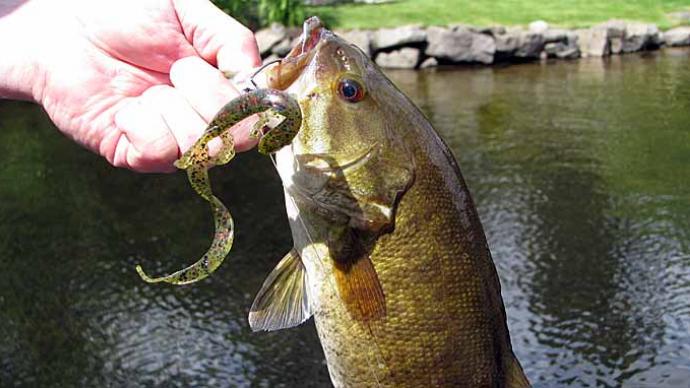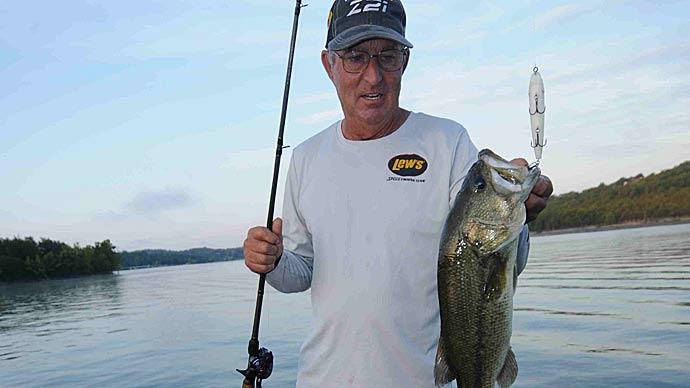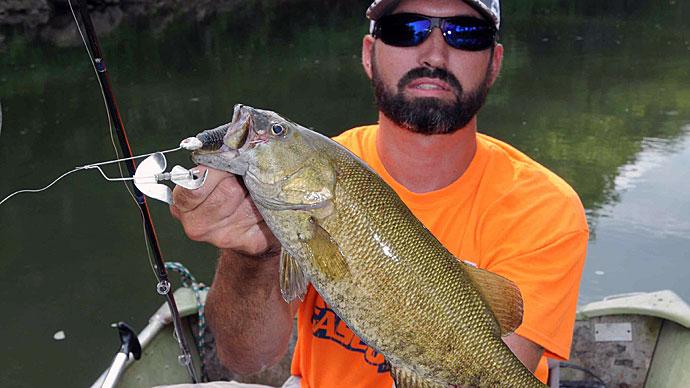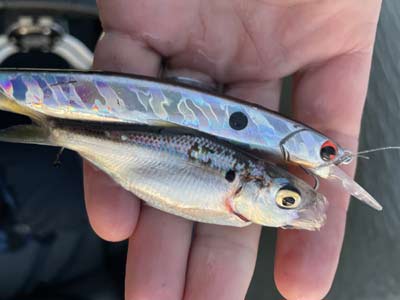
After a long, hot summer, bass are usually worn out from hotter temperatures and increased boating and fishing pressure. Even though the calendar may say fall, it's still warm (or hot) in most places this time of year, and the "dog days of summer" will continue to drag on for a while.
There are some exceptions, of course, like in northern climates, but generally speaking, the transition from fall to summer is one of the most challenging times of year to catch bass consistently. To stay ahead of the transition and have success, stick to these five rules to make your early fall fishing more productive.
Find The Baitfish
This one is about as straightforward as possible, but if you can locate the baitfish, you'll find bass nearby. It's a good rule for all seasons, but it is essential right now as bass are focused on one thing: eating. They still feed heavily in other seasons, but spawning in the spring and staying comfortable in the summer and winter take precedence many times. Look for baitfish, schools of shad, or other nomadic species. If your lakes don't have a good population of those species, you can seek out groups of bluegill, perch, and other forage.
Once you find the baitfish, by watching surface activity or birds or with your electronics, match your baits as closely as you can with the baits' color, shape, or profile. Since bass are focused on eating, showing them something similar to their meal will ensure you get more bites.
Cover Water
Image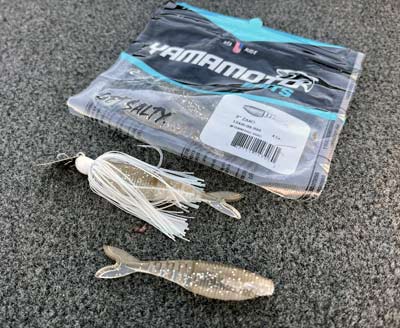
Vibrating jigs like a ChatterBait in shad colors with a matching soft plastic trailer are excellent lures for fall fishing and covering water. Since many bass will be grouped up this time of year in places with baitfish, there will undoubtedly be areas with no baitfish and no bass. Then, when you find the baitfish, you'll find those groups, but finding the best spots can be like finding a needle in a haystack, and that's why fishing fast and covering ground is the best approach until you find what you are looking for: actively feeding bass.
Stick with fast-moving baits like topwaters, crankbaits, spinnerbaits, vibrating jigs, swimbaits, and others that imitate baitfish and can be fished quickly as you search for the best areas.
Don't Overlook The Obvious
Some of the best and most productive areas this time of year are also obvious. Long points that dump into deeper water on the main lake can be highly effective areas, and they are right in front of you and easy to find on a map. Fishing these points leading towards the backs of creeks and into pockets is good because they offer a place for bass to switch gears and locations as summer turns to fall.
Image
Big points can be excellent targets for bass to feed on baitfish and are always worth a few casts. Other good examples of the most obvious (but effective) locations are structure like dams, riprap banks, bridges, and marinas. They stick out because they are easy to locate but always have some bass living around them. Look for rocks, laydowns, and grass for natural cover, as these will also hold fish.
Seek Out Isolated Cover
Single pieces of cover are another rule to follow when looking for bass in the transition. Many lakes are lower in late summer and fall, either because they were drawn down on purpose or because of evaporation and lack of rain. No matter the cause, the water will often be down, and cover and structure can be lacking along the shoreline.
Image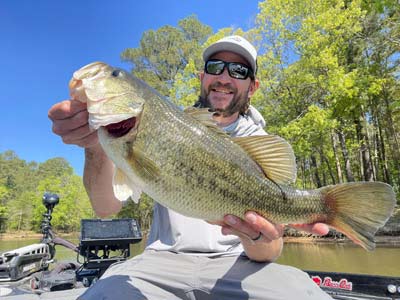
A bass caught by the author on a single isolated log on a stretch of bank. Because of this, look for single logs, rocks, and other objects alone on stretches along the bank. They will hold any fish in the area, and making casts to them is smart because they are high-percentage locations. If a bass is along the bank, it will likely be on the one isolated piece of cover.
Timing The Bite
With baitfish like shad being the main course during the fall transition, locating them is crucial, but so is timing the bite and being ready when bass get active and start chasing the bait. In the warmer months, the mornings will always have a lot of action as the bass take advantage of the low-light conditions and feed first thing in the morning. The early bird gets the worm here, and being there early and ready is vital to capitalize on the bite.
There are also other windows throughout the day when schooling action can pop up, and while there is no way to predict it, be ready for fish to blow up and start eating baitfish on the surface at any time. To be in a better position to capitalize, always have a topwater bait close by, preferably one that you can cast a long distance to reach fish in any direction.
Speaking of topwaters, having one ready for schooling action is smart, but you can also fish them throughout the day. Many tie them on for the early bite and then again in the evening, but this time of year can be very good for topwaters, even in the middle of the day when the sun is shining bright. Bass are looking upwards for baitfish, and you can throw a walking topwater bait anytime and get fish to come up to strike.
Fishing during the summer-to-fall transition can be tricky, but there are some general rules and ways to improve it. Sticking to these tried-and-true methods will put the odds in your favor and help you catch more bass.


